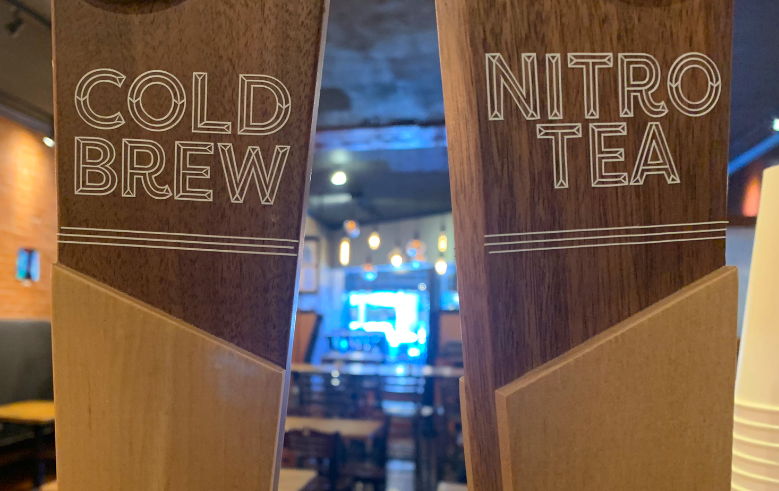Coffee vs tea: Students discuss which drinks they prefer
Amber Mohmand/Iowa State Daily
Cold brew is a popular drink which has a high amount of caffeine while specific teas vary in amount. The nitro tea is herbal so it has no caffeine in it.
September 4, 2019
For students in college, caffeine seems to be an essential tool to keep doing homework and the method of obtaining it can be different for all. For most students, there can be a debate about the taste between tea and coffee.
“In high school I used to drink tea every single morning, and I think it wasn’t enough for me,” said Megan Davis, a senior in genetics.
Some students use coffee as a source of energy. In terms of caffeine, eight ounces of regular brewed coffee has 95 mg to 165 mg of caffeine while one ounce of shot espresso has 47 mg to 64 mg. A latte has 63 mg to 126 mg of caffeine in eight ounces, according to the Mayo Clinic.
Tea has a significantly lower amount of caffeine — there is 25 to 48 mg in eight ounces of brewed black tea and 25 mg to 29 mg in eight ounces of brewed green tea. Students have also said they prefer tea due to taste and variety.
Belle Newman, a sophomore in aerospace engineering who works at Tea Time, a local boba tea business, said tea “is more fun.”
“My favorite tea to drink is the Thai Ice Tea; I just like to make off-menu drinks that follow similar recipes to the ones we do have,” Newman said.“Like matcha smoothies I’ve made before that was really good — which we don’t have on the menu.”
The caffeine content in matcha is similar to black tea, both having a higher concentration. According to Teatulzía, matcha is made in a way that people are ingesting more caffeine. Matcha is a green tea ground into a powder and whisked into hot water rather than steeped.
Emily Redden, a senior in music, said she has no preference to both drinks but uses tea as a way to calm herself down.
“It’s just calming; it could be three in the afternoon and I’m at home but if I’m super stressed I will make some tea while I’m doing my homework,” Redden said.
For coffee, some students drink it purely for the taste. Some drinks have lots of flavor, like the caramel macchiato, a multilayered drink with vanilla-flavored syrup as the base, steamed milk building the drink following the foam with the espresso, topped off with a caramel drizzle. The drinks are also popular by the season, such as the pumpkin spice latte which is a common drink during the fall season.
Though seasonal drinks is not the primary reason why Kayra Viezcas, a junior in psychology, drinks coffee. For her it’s the memory that it brings.
“Coffee for me is so dependable, it universally and affordably curates excitement, and I am one to admit my preference for quick gratification,” Viezcas said. “Coffee brings me back to waiting out blizzards in tents on the rocky mountain sides of the Sierra Nevadas, when I only had Cowboy Coffee — grounds dumped right into boiling water for lack of filter — and a cigarette for breakfast; the pair, at the time, felt like the only two things that could satisfy and warm me. I am my most creative when I am under-slept and over caffeinated.”
Black coffee can also have some health benefits, such as protecting against Parkinson’s disease, type two diabetes, liver disease and cancer, according to an article written by Mayo Clinic. However, there are also possible health risks of coffee, such as cardiovascular disease, according to an article written by Dr. Robert H. Shmerling, an associate physician and faculty editor for Harvard Health Publishing, for those who have had “well over four cups per day,” but it did not take smoking into account.

















